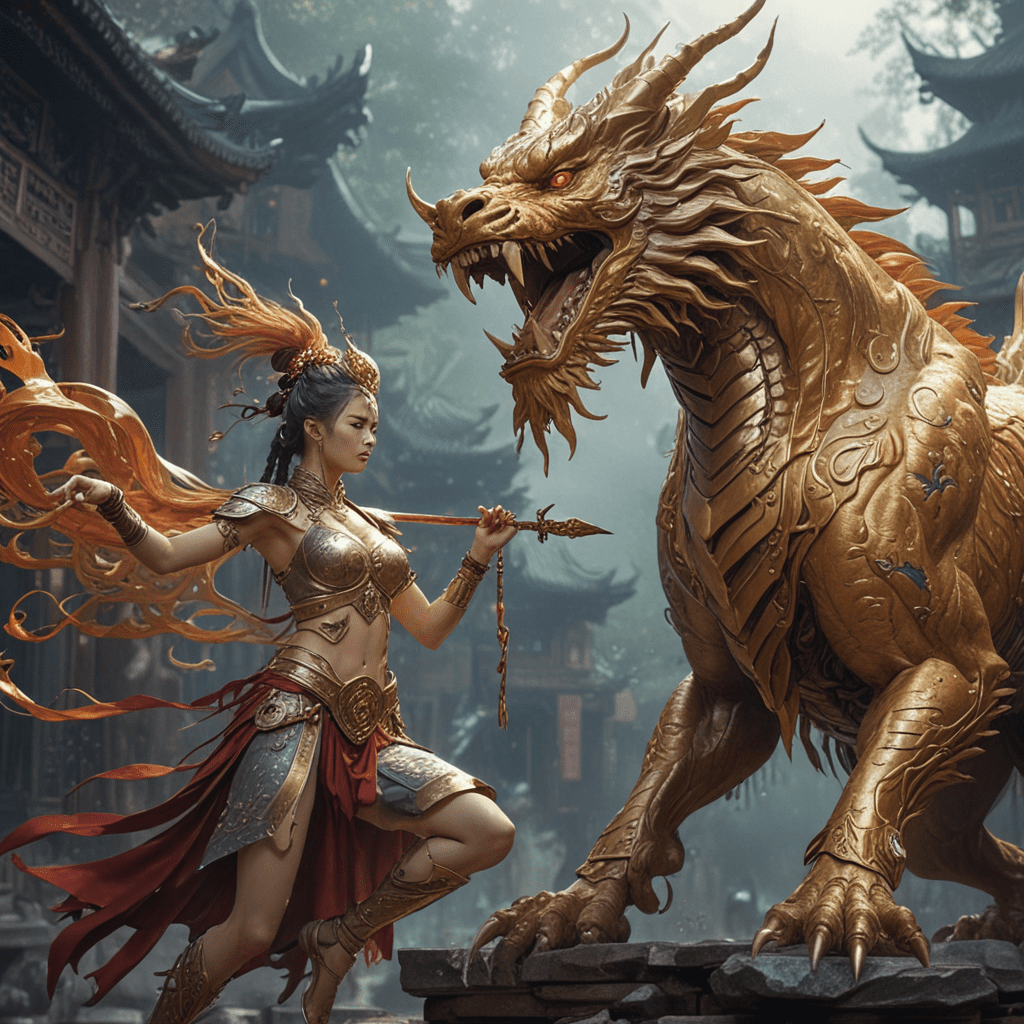The Golden Feather: Myths of Flight and Freedom
Introduction: The Allure of Flight and Freedom
Flight and freedom are two of the most profound desires inherent in human nature. Throughout various cultures, flight symbolizes liberation, transcendence, and the pursuit of aspirations beyond the earthly realm. The act of soaring through the skies evokes feelings of unbounded potential and the thrill of exploration. In numerous mythologies, feathers serve as potent symbols of these ideals, representing not only the physical act of flying but also the spiritual ascent towards higher states of being.
The Golden Feather: A Symbol of Transcendence
The golden feather, in particular, epitomizes a unique motif found across different mythologies. Often associated with divine beings, the golden feather signifies a connection to the divine and the potential for spiritual growth. In many stories, possessing a golden feather is a mark of favor from the gods, a talisman that grants extraordinary abilities or enlightenment.
- Egyptian Mythology: The feather of Ma’at, representing truth and justice, is weighed against the heart of the deceased to determine their fate in the afterlife.
- Hindu Mythology: The peacock feather associated with Lord Krishna symbolizes beauty, grace, and the divine connection to nature.
- Native American Traditions: Golden feathers are often used in rituals to invoke protection and spiritual guidance.
Flight in Mythology: From Icarus to Phoenix
Flight has long been a captivating theme in mythology. Many tales explore the intricacies of ambition and consequence, as well as the themes of rebirth and renewal. Two of the most iconic myths are those of Icarus and the Phoenix.
The story of Icarus, who flew too close to the sun with wings made of feathers and wax, serves as a warning about the perils of hubris. His ambition led to his downfall, illustrating the delicate balance between aspiration and recklessness.
In contrast, the Phoenix represents the cyclical nature of life and freedom. Rising from its ashes, the Phoenix symbolizes rebirth, resilience, and the idea that from destruction comes new beginnings. This duality reflects the complex nature of freedom in the human experience, where liberation can result in both triumph and tragedy.
Feathers as Symbols of Power and Protection
Feathers hold significant cultural importance, especially in indigenous communities. They are often viewed as powerful symbols that encompass various meanings, including protection, strength, and spiritual connection.
- Native American Cultures: Feathers are sacred items, often worn by warriors and leaders to signify bravery and honor. They are integral to ceremonies and rituals.
- Maori Culture: The feathers of the Kiwi and the Takahe are symbols of pride and identity, representing a deep connection to the land and ancestry.
- Australian Aboriginal Traditions: Feathers are used in storytelling and rituals, symbolizing connection to the spirit world.
The Myth of the Winged Ones: Angels and Deities
Winged beings, whether angels or deities, are often depicted in mythologies as embodiments of freedom and divine intervention. These celestial figures transcend human limitations, offering guidance and protection.
In Christianity, angels symbolize the divine connection between heaven and earth, serving as messengers and protectors of humanity. Similarly, in ancient Greek mythology, Hermes is depicted with wings, representing the fluidity of movement between the mortal and divine realms.
- Garuda: In Hindu mythology, Garuda is a divine bird and the vehicle of Lord Vishnu, symbolizing strength and the power of liberation.
- Isis: In Egyptian mythology, the goddess Isis is often depicted with wings, representing protection and the nurturing aspect of freedom.
The Connection Between Birds and Human Aspiration
Throughout history, birds have inspired humans to dream of flight. Their ability to traverse the skies has led to innovations in technology and a deep appreciation for the beauty of nature.
Bird imagery frequently appears in literature and art, symbolizing freedom, hope, and the quest for a higher purpose. From the poetic verses of John Keats to the vibrant paintings of birds in flight by artists like Audubon, the depiction of birds serves as a reminder of our aspirations and potential.
The Dual Nature of Flight: Freedom vs. Escape
Flight in mythology often embodies two conflicting themes: freedom and the desire to escape. Many narratives illustrate how the allure of freedom can lead to escapism, revealing the complexities of human desires.
In Homer’s epic, the Odyssey, Odysseus’s journey home is fraught with temptation from the Sirens, whose enchanting song represents the seductive nature of escape. This duality invites contemplation on whether the pursuit of freedom is truly liberating or a means of fleeing from reality.
Modern Interpretations of the Golden Feather Mythos
In contemporary culture, the myths of flight and freedom continue to resonate. The golden feather serves as a metaphor for personal achievement and the quest for enlightenment.
Technological advancements, such as aviation and virtual reality, offer new interpretations of flight, transforming our understanding of what it means to be free. The dream of flight is no longer confined to the realm of mythology but is now a tangible aspect of modern life.
The Psychological Aspect: Freedom in the Human Experience
The implications of flight and freedom extend into the psychological realm. The desire to fly encapsulates our innate yearning for liberation from constraints, whether physical, emotional, or societal.
In dreams, the act of flying often symbolizes the realization of aspirations and the shedding of burdens. Psychologically, flight represents a powerful metaphor for overcoming obstacles and achieving personal growth.
Conclusion: The Enduring Legacy of Myths of Flight and Freedom
The myths surrounding flight and freedom, particularly the symbolism of the golden feather, continue to shape our understanding of these concepts. From ancient tales to modern interpretations, the narratives remind us of the intricate relationship between ambition, consequence, and the pursuit of transcendence.
As we navigate our own journeys, the enduring legacy of these myths inspires us to explore new heights and embrace the freedom that comes with self-discovery.



